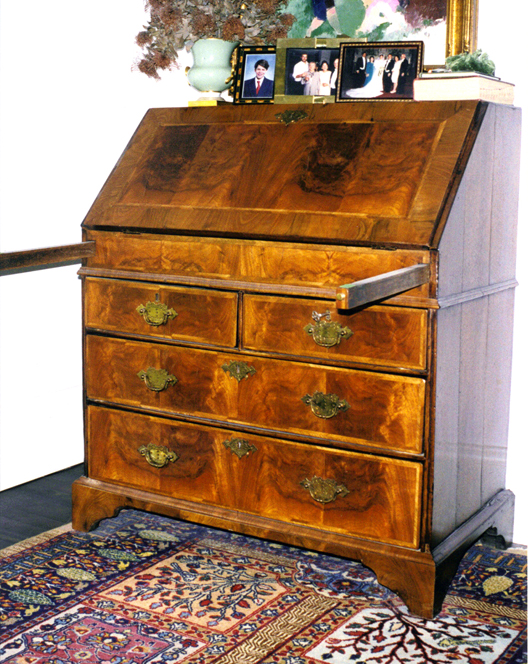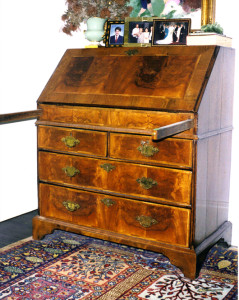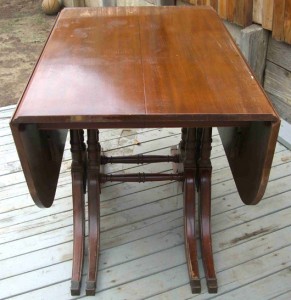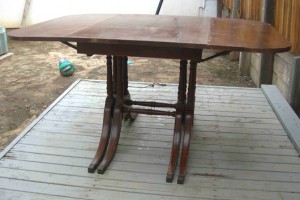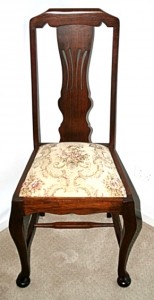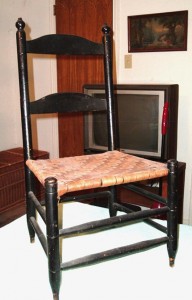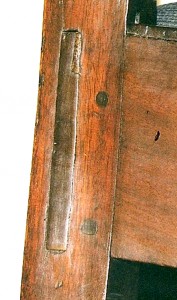CRYSTAL RIVER, Fla. – I admit I do have really random thoughts on occasion as I suspect most of us do. However, since I spend a great deal of my waking hours, and some of my nonwaking hours as well, absorbed in the subject of antique furniture, quite a few of my random thoughts naturally center on that subject. And just to show the inquisitive mind I have, many of the random thoughts express themselves as questions.
Here are a few of my random thoughts. I offer few if any answers, just primarily questions. If you happen to randomly know the answer to one or more of these random thoughts please let me know.
I’ll start with one that I do have a hint on the answer. Why is part of the back of a chair called a stile? Turns out a stile is a section of an English fence that allows passage; not exactly a gate, just a place where the fence can be breached by means of a gap, narrow steps or a ladder. Some stiles even have a dog gate next to them that can be raised to allow the passage of your canine companion just in case the dog can’t climb the ladder. This definition can easily be imagined by looking at a ladder-back chair. Looks like a stile to me.
Why is the moveable or removable section of an extension dining table called a leaf? Logically it seems the part should be called a “leave.” After all you have to make a decision whether to leave the piece in or out and decide whether to leave it up or down. Leave seems to more impart the true nature of the element. Or is it the resemblance to leaves in a book?
Then there is the question of chairs. Why do they have four legs? Is it just because that seems to fit in well with most other life on Earth that is not bipedal? Why don’t chairs have three legs? Some early forms of seating had three legs and it certainly solves one problem. A three-legged chair will ways sit flat on an uneven surface, even if one leg is shorter or longer than the others. That would make many restaurant chairs I have occupied much more comfortable rather the “tilt-a-whirl” models you find in many eateries and waiting rooms. That goes for tables too.
And speaking of legs, why do some pedestal table bases have three legs? If the answer is stability then certainly chairs should have the same opportunity. And if that is true why do some pedestals have four legs like chairs? Why not five? When you get right down to it the U.S. government has already answered that question through OSHA, the Occupational Safety and Health Administration. Take a look at the bottom of your office chair. If you are sitting in a tilt/swivel standard office chair made in within the last two decades it will have five, count ’em, five legs instead of three or four. Why? It’s safer according to the OSHA bureaucrats who obviously have nothing better to do other than scoot office chairs around to see which one falls over first. According to OSHA “The chair should have a five-leg base with casters that allow easy movement along the floor.” Here’s the site for you to take a look at how OSHA sees your chair. http://www.osha.gov/SLTC/etools/computerworkstations/components_chair.html
Then there are some of those odd names found in furniture and furniture parts. One odd name for a part that I do understand is the name for the wooden peg driven through a mortise and tenon joint. According to John Bivens originally this peg was called a “tree nail” as opposed I suppose to an iron nail. English being what it is the phrase tree nail eventually became “trennel,” a colloquial contraction of the original name. However, I was informed years ago by a grizzled old antique furniture veteran that the name of that piece was a “true nail” because it kept the joint true. That name eventually became “trunnel.” Which, if either, is correct?
But the reason for some names escapes me. Like splat. Splat is the sound a cube of Jello makes when it hits the tile floor. Why is the backrest of a chair called a splat? And what about those wooden slides that you pull out to support the drop front of your secretary? They are quite handy and in common use. But why are they called “lopers”? It has nothing to do with a horse’s gait and is not the swivel used in rope making. It is however a surname that ranks 4152 in frequency in the United States. But what does it have to do with a drop-front desk?
Another puzzling word is “dentil.” I know it is derived from the Latin “dens,” a tooth, and is used to describe a block-like molding that is said to resemble teeth. In architecture it actually represents the pattern formed by the ends of rafters sticking out under a roofline. It was used in temples in Asia Minor, one of the earliest being the tomb of Darius in 500 B.C. Since it obviously refers to the shape of teeth why isn’t it spelled “dental” like everything else that has to do with teeth?
If you know the answers to any of these question or happen to have random thoughts of your own along the same lines please let me know.
Send comments, questions and pictures to Fred Taylor at P.O. Box 215, Crystal River, FL 34423 or email them to him at info@furnituredetective.com.
Visit Fred’s newly redesigned website at www.furnituredetective.com and check out the new downloadable “Common Sense Antiques” columns in .pdf format. His book How To Be a Furniture Detective is available for $18.95 plus $3 shipping. Send check or money order for $21.95 to Fred Taylor, P.O. Box 215, Crystal River, FL, 34423.
Fred and Gail Taylor’s DVD, Identification of Older & Antique Furniture ($17 + $3 S&H) is also available at the same address. For more information call 800-387-6377 (9 a.m.-4 p.m. Eastern, M-F only), fax 352-563-2916, or info@furnituredetective.com. All items are also available directly from his website.



